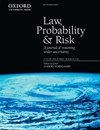Walking on Thorns: The Mostar Symposium of 1966
IF 1.4
4区 社会学
Q1 LAW
引用次数: 0
Abstract
The symposium held in Mostar in 1966, where the communists from Bosnia and Herzegovina publicly discussed the national issue of Croats, admitting also the wrong politics implemented after 1945 towards the Croats of West Herzegovina, aimed at the integration of West Herzegovina into the BiH framework, with the ultimate goal of integrating BiH for the purpose of achieving its equal status in the Yugoslav federation. After an extensive analysis of the situation in West Herzegovina that showed a mass emigration of Croats from the area to Western Europe, due to the negative political and economic situation, where they joined various immigrant groups mostly hostile towards Yugoslavia, the communist authorities had tried to end this trend and integrate the West Herzegovina area primarily around the regional center (Mostar), and then to open the perspective of a wider integration of Bosnia and Herzegovina around the centre of the republic (Sarajevo), for the purpose of imposing Bosnia and Herzegovina as an equal member of the Yugoslav federation. Although the attitudes presented at the 1966 symposium opened certain perspectives to Croats of West Herzegovina, some high-ranking politicians also showed resistance. Critics appeared who thought that opening of West Herzegovina, liberalization of the political attitude towards Croats and the removal of the ustaša legacy imposed to the area opened space for revitalization of the ustaša movement. The Belgrade press was at the forefront of such claims, using several terrorist activities that had taken place in that period in Yugoslavia (the movie theatre and the railway station attacks in Belgrade, planting explosives at the Zagreb Mirogoj Cemetery, etc.) as an argument, since the accused were Croats from West Herzegovina. BiH political leadership claimed that the attacks were orchestrated by political and intelligence circles who opposed the Mostar symposium, and that certain groups outside Bosnia and Herzegovina used those events as an opportunity to interfere into the political events in Bosnia and Herzegovina in order to compromise the politics of creation of national equality, which was the main political orientation of BiH communists.行走在荆棘上:1966年莫斯塔尔研讨会
1966年在莫斯塔尔举行的座谈会上,来自波斯尼亚-黑塞哥维那的共产党人公开讨论了克罗地亚人的民族问题,并承认1945年以后对西黑塞哥维那的克罗地亚人实施了错误的政治,其目的是将西黑塞哥维那纳入波黑框架,其最终目标是使波黑一体化,以实现其在南斯拉夫联邦中的平等地位。在对西黑塞哥维那局势进行广泛分析后发现,由于不利的政治和经济形势,大批克罗地亚人从该地区移居西欧,在那里他们加入了主要敌视南斯拉夫的各种移民团体,共产党当局试图结束这一趋势,并将西黑塞哥维那地区主要集中在区域中心(莫斯塔尔)周围。然后打开波斯尼亚-黑塞哥维那在共和国中心(萨拉热窝)周围更广泛一体化的前景,以便使波斯尼亚-黑塞哥维那成为南斯拉夫联邦的一个平等成员。虽然1966年座谈会上提出的态度为西黑塞哥维那的克族人开辟了某些前景,但一些高级政治家也表示反对。批评人士认为,西黑塞哥维那的开放、对克罗地亚人的政治态度的自由化以及清除强加在该地区的ustaša遗产为ustaša运动的复兴开辟了空间。贝尔格莱德报界站在这种说法的前列,利用那段时期在南斯拉夫发生的几起恐怖主义活动(贝尔格莱德的电影院和火车站袭击、在萨格勒布米罗戈吉公墓安放炸药等)作为论据,因为被告是来自西黑塞哥维那的克罗地亚人。波黑政治领导人声称,这些攻击是由反对莫斯塔尔专题讨论会的政治和情报圈精心策划的,波斯尼亚-黑塞哥维那境外的某些团体利用这些事件作为干预波斯尼亚-黑塞哥维那政治事件的机会,以破坏创造民族平等的政治,而这是波黑共产党人的主要政治方针。
本文章由计算机程序翻译,如有差异,请以英文原文为准。
求助全文
约1分钟内获得全文
求助全文
来源期刊

Law Probability & Risk
MATHEMATICSSTATISTICS & PROBABILITY&-STATISTICS & PROBABILITY
CiteScore
2.10
自引率
28.60%
发文量
8
期刊介绍:
Law, Probability & Risk is a fully refereed journal which publishes papers dealing with topics on the interface of law and probabilistic reasoning. These are interpreted broadly to include aspects relevant to the interpretation of scientific evidence, the assessment of uncertainty and the assessment of risk. The readership includes academic lawyers, mathematicians, statisticians and social scientists with interests in quantitative reasoning.
The primary objective of the journal is to cover issues in law, which have a scientific element, with an emphasis on statistical and probabilistic issues and the assessment of risk.
Examples of topics which may be covered include communications law, computers and the law, environmental law, law and medicine, regulatory law for science and technology, identification problems (such as DNA but including other materials), sampling issues (drugs, computer pornography, fraud), offender profiling, credit scoring, risk assessment, the role of statistics and probability in drafting legislation, the assessment of competing theories of evidence (possibly with a view to forming an optimal combination of them). In addition, a whole new area is emerging in the application of computers to medicine and other safety-critical areas. New legislation is required to define the responsibility of computer experts who develop software for tackling these safety-critical problems.
 求助内容:
求助内容: 应助结果提醒方式:
应助结果提醒方式:


